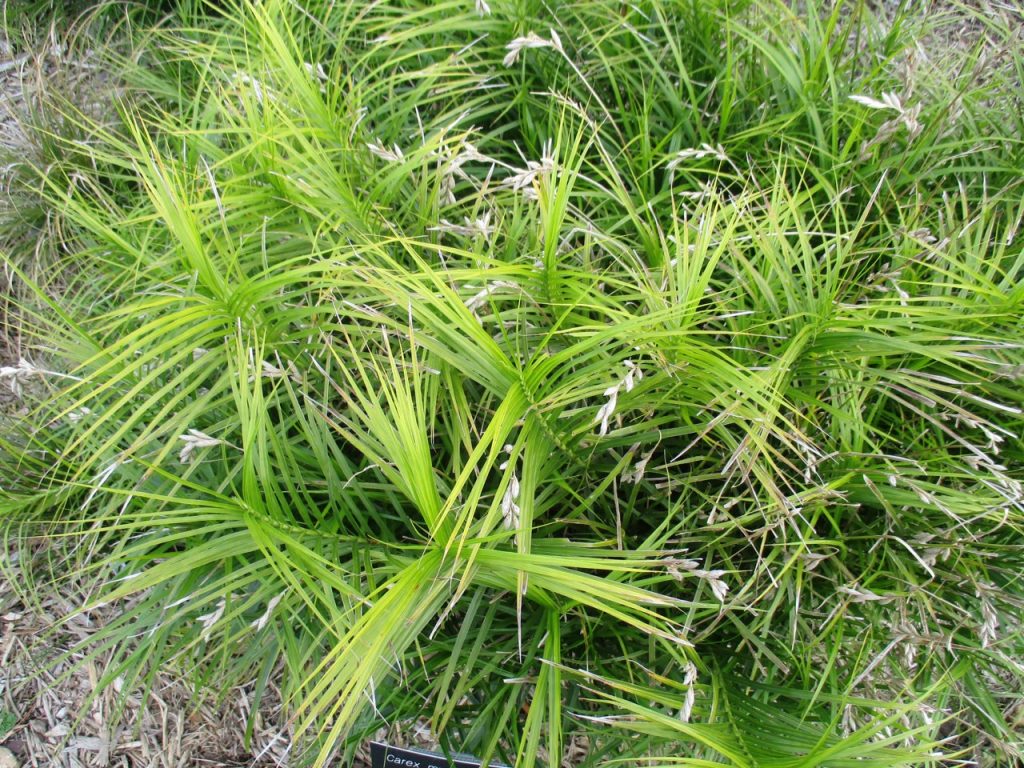3.6: Palm sedge
- Page ID
- 91481

Carex muskingumensis
Cool season; Perennial
Characteristics: 2–3’; upright open; foliage green to yellow; flowers tan; self-seeder
Growing Conditions: full sun to medium shade; self-seeder; hardy zones 3–7
Native to wet areas along rivers and marshes, palm sedge is known for its stiff foliage and the three-ranking leaf arrangement typical of sedges. Easy to grow, it tolerates standing water at lake edges and soils that flood. In ideal sites, plants can be 36” wide, thick, and full. Chartreuse foliage when grown in sun, dark green in shade.
Nativars:
- ‘Little Midge’: very fine textured, 12-15” tall, stiff three-ranked foliage.
- ‘Oehme’: has yellow margins, slower growing, very attractive. Named for Wolfgang Oehme.
Associated Lepidoptera:
No records of Lepidoptera feeding on palm sedge were found in the literature, but further research into Lepidoptera larval habits may discover associations in the future.


